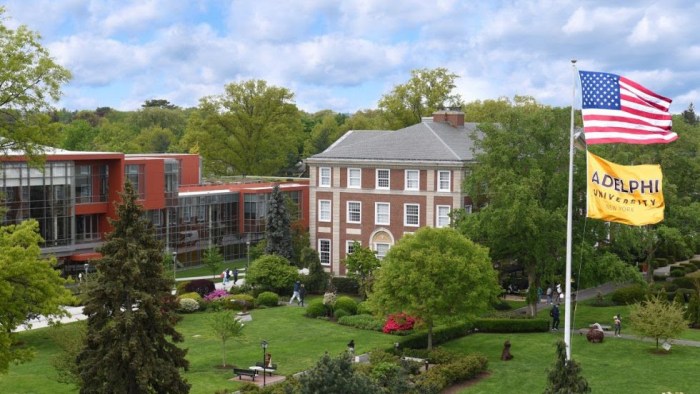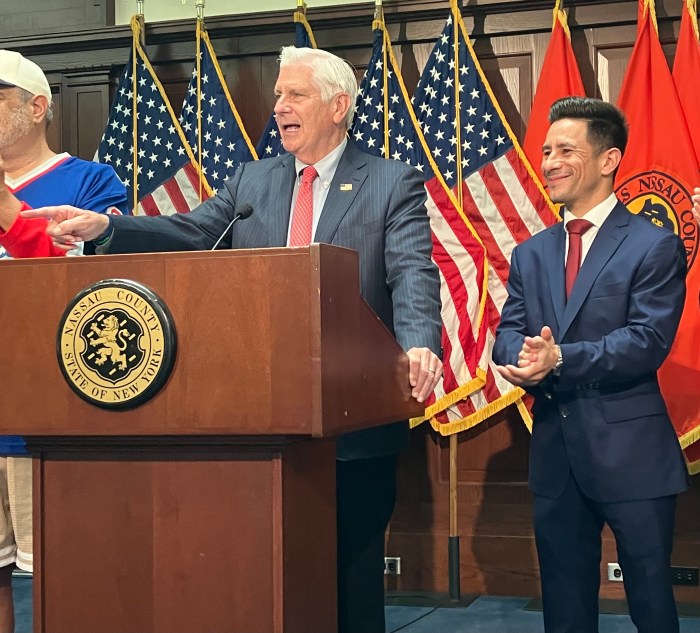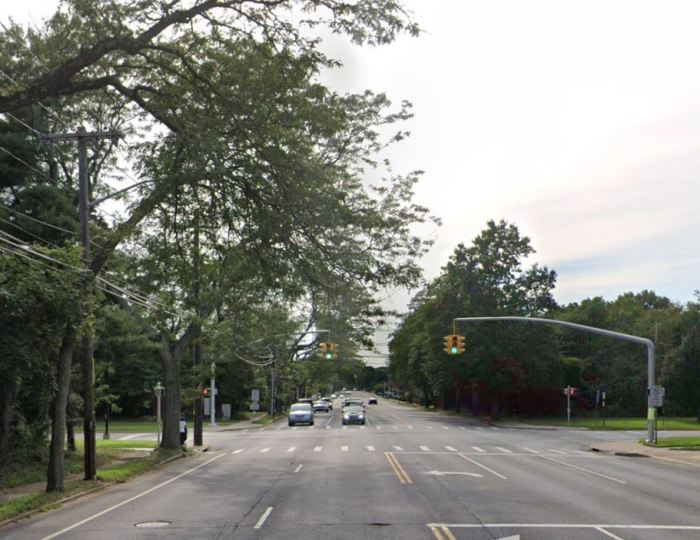Proposals aim to maintain high standards while walking economic tightrope
(Editor’s note: Garden City Life went to press before the budget vote on May 15. Please visit www.antonnews.com for results.)
Throughout the process of formulating the 2012-13 school budget, the Garden City Board of Education has used a logo to represent its goal of achieving fiduciary equilibrium—a stick figure with outstretched arms forming a see-saw, one end featuring a group of children balanced out by an opposite end of stacks of money. In the presentation of the proposed budget that residents cast votes for or against on Tuesday, May 15, Superintendent Dr. Robert Feirsen and his fellow board members considered this to be an ideal balance.
As had been presented in the last budget meeting that took place in late April, the budget to budget increase would end up being 3.06 percent or $3,098,470. This would translate to a projected tax levy increase (with STAR) of 3.54 percent, a figure well below New York State’s maximum allowable tax levy of 4.2 percent. “There are in fact two thresholds for establishing the type of votes we have to pick up, whether it’s the simple majority or the supermajority. Given what we have presented to the board and what’s been adopted, we only need a simple majority to be able to pass the budget, which would be 50 percent plus one, [versus 60 percent for a super majority]” he explained.
Primary Budget Goals
Dr. Feirsen also pointed out that one of the school board’s primary budget design principles was maintaining the high standards established by the district that have made Garden City a destination community; an area where people move to oftentimes based on the reputation of the schools.
Other considerations taken into account were:
Ensure health and safety and provide funds to maintain the physical plant.
Respect that property taxes from individual homeowners remain the main source of revenue for the budget.
Provide allocations to address mandates and obligations, including new teacher/ principal evaluation system (APPR) and recently-passed New York State learning standards (CCLS), as well as 2009 School Investment Bond debt service.
Work to ensure that current and future students enjoy the same opportunities that former students enjoyed.
During his presentation, Dr. Feirsen listed numerous cost control efforts that included the renegotiation of GCTA contract and recent settlements with CSEA and paraprofessionals, the continued reduction/ consolidation of positions, numerous reductions (advertising, postage) and the district’s membership in numerous consortiums ranging from transportation and technology to supplies and insurance. From 2008-09 to 2012-13, overtime alone is projected to be reduced by roughly 30 percent.
Supported Initiatives
These savings have been directed to a number of initiatives supported by the proposed 2012-13 budget that include:
Continue strengthening of district writing and research efforts.
Increase wireless hot spots required by newest technology along with the expanded use of tables (iPads, etc.).
Develop and implement career education programs for high school juniors.
Maintain and enhance extensive services provided for students with disabilities.
Maintain one of the best athletics programs in the country.
Replace 75-year-old auditorium seating at Stewart School.
$600,000 for capital improvement
The purchase of two full-size buses and two vans.
Regarding the school transportation issues, Dr. Feirsen pointed out that over 3,000 students are transported daily, which represents one-tenth of what Nassau County buses transport. The maintaining of this part of the budget was something he admitted was important to many parents. “When people comment about the quality of our school district, one of the things they comment most often about is the quality of our transportation operation,” he said. “People love the fact that they know the drivers and that when students go on field trips, extra-curricular events or athletic competitions, the buses are handled by our own drivers, giving them great confidence in the safety of the operation.”
Among the proposed staff reductions are one grade 7 core subject instructor (social studies, math, science) due to declining enrollment along with one bus driver and 1.2 full-time equivalent (FTE) administrative-business office positions, strictly determined as cost reduction moves. Should there be any possible enrollment increases at any level, the budget also includes two FTE teacher positions held in reserve—one in general education and one in special education.
The athletic department also faces proposed cuts including the elimination of the high school strength and conditioning (S & C) programs, the elimination of 31 staff positions (21 assistant coaches, four S & C coaches, six middle school intramural supervisors) and the reduction of four team rosters. Offsetting these changes will be the addition of 10 middle school and high school intramural supervisors as a means of offsetting the impact of the program adjustments.
Garden City’s ROI (Return On Investment) For Budget Passage
In going through this financial belt-tightening, numbers crunching and difficult decision-making, Dr. Feirsen reiterated the numerous accolades Garden City Public Schools have accrued and continue to garner. Not only was Garden City High School ranked number 115 in the nation by Newsweek, but U.S. News and World Report recently ranked the school 138, a gain of 60 places since 2010. And for as proud as he is of these achievements, Dr. Feirsen was quick to point out how he viewed these various polls. “I don’t put all that much stock in these kinds of things but these things are important to know that we’re making progress in the areas that are often looked at by the media in addition to what people look at when they visit our website,” he admitted. “We’re delighted with that, because it does represent real gains including an increase in AP enrollment and performance.”
Dr. Feirsen also went into length with comparisons to other comparable districts in various categories. Garden City’s per pupil cost is $17,064, just above Herricks’ $16,672 and roughly five thousand behind leader Locust Valley with $22,732 and out of 56 Nassau County school districts, the village ranks 47th in 2011-12 Class 1 Tax Rates at $486,644. Neighorhoodscout. com, a real estate search website, ranked Garden City better than 97.9 percent of New York school districts and 97.6 percent of school districts nationwide. Likewise, according to comparative school search engine schooldigger.com, Garden City schools rank 19th overall in New York State for standardized test scores. All this is accomplished despite the fact that the village receives less state aid per pupil than similar school districts including Jericho, Syosset and Herricks. But the trickiest part of the budget is the breakdown of mandated (fixed) spending versus discretionary spending, with the latter only having an 8 percent allotment. Among the topics this addresses are class size or the need for a photocopy machine. Dr. Feirsen pointed out the absurdity of these being considered discretionary versus mandated items in the budget. “You could shoehorn 100 kids into a classroom if you didn’t violate fire codes,” he pointed out.
Voting Outcomes
Should the vote not pass, Dr. Feirsen said the school district would have to adopt a contingent or austerity budget. Under the new tax levy law, the district would have a 0 percent tax levy cap, meaning that no further revenue could be collected through property taxes that were collected this year (approximately $87.3 million). A reduction of $3.2 million would be applied to the budget with all contractual and debt service obligations for 2012-13 remaining in effect including items like diesel fuel purchases and pension mandates.
Cuts would be the by-product of the rejected budget, with money being slashed for academic programs (summer enrichment, AIS, continuing education) with class sizes subsequently increasing. Other items that would fall under the budget axe would be athletics, clubs, supplies and materials and capital purchases (computer equipment, school buses).
End Result
Amid all the dense jargon, state education mandates and numerous figures that have been bandied about, the endgame residents are concerned with is how the schools come out should this budget pass. To the board’s credit, they’ve succeeded in potentially preserving programs with no major changes proposed. Class size guidelines will be maintained, no buildings will close, special programs (FLES, Quest) will be retained as will full-day kindergarten/music, art and theater. The current bus transportation policy also remains intact. Any used reserves were utilized in a manner that did not deplete accounts and staff reductions were done in response to declining student enrollment. Lastly, a fund balance was maintained to reduce the chance of a tax spike this year.































